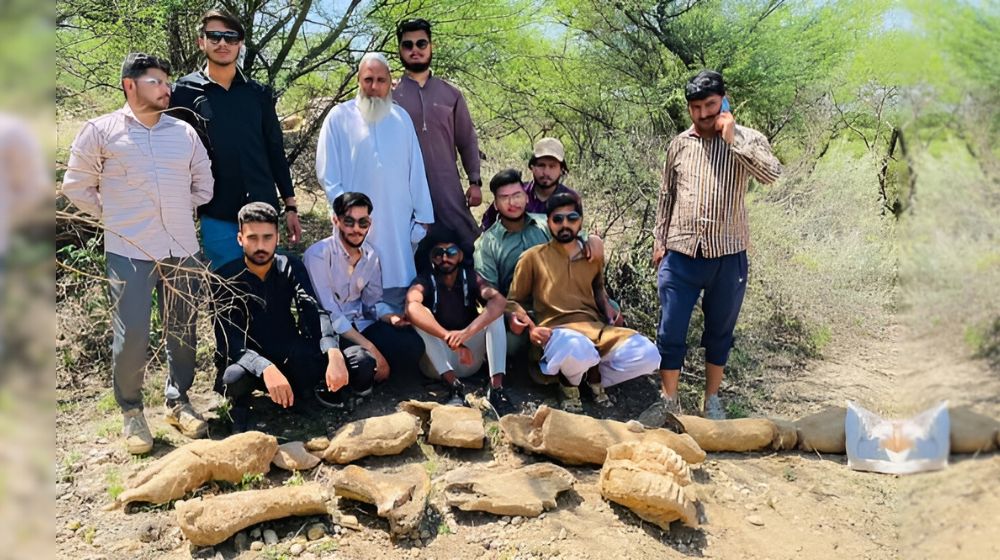
A 1.5 million years old elephant skeleton was discovered in Dina, MBD Punjab. This remarkable find offers a captivating glimpse into the ancient past. They shed light on the diverse fauna that once roamed the region and enhance our understanding of prehistoric life. A team of archaeologists and paleontologists, in collaboration with the local authorities, carried out the excavation, unearthing a remarkably well-preserved elephant skeleton dating back to the Pleistocene epoch. The painstaking excavation process involved delicate handling and meticulous documentation to ensure the preservation of every bone and fragment.
The discovery of the ancient elephant skeleton in Dina is of immense scientific significance. It offers invaluable insights into the region’s paleontological history and the evolution of elephants in the Indian subcontinent. By analyzing the remains, experts can determine the size, diet, and behavior of these ancient elephants. However, the presence of such large mammals indicates a rich and diverse ecosystem that existed millions of years ago. It will provide clues about the climate, vegetation, and other species that coexisted during that time.
Following the excavation, the elephant skeleton will undergo rigorous scientific investigation. Paleontologists will analyze the bones, teeth, and tusks to determine the elephant’s species, age, and cause of death. Furthermore, scientists will employ radiocarbon dating and other advanced techniques to accurately determine the exact age of the specimen. Comparative studies with other elephant fossils from similar periods will enable researchers to unravel the evolutionary lineage and geographical distribution of these ancient mammals.
To ensure the long-term preservation and accessibility of this exceptional find, the elephant skeleton will be meticulously cleaned, conserved, and cataloged. Upon completion of this process, plans are underway to put the specimen on public display at a local museum, allowing visitors to marvel at the ancient wonders of the region and learn about its prehistoric heritage.
Moreover, the unearthing of a 1.5 million-year-old elephant skeleton in Dina. MBD Punjab provides a thrilling glimpse into the prehistoric world. Additionally, this remarkable find not only enhances our understanding of ancient fauna. But also reinforces the need for continued exploration as well as preservation of our planet’s rich paleontological heritage. Such discoveries are invaluable in unraveling the mysteries of our past and deepening our appreciation for the Earth’s long and complex history.
